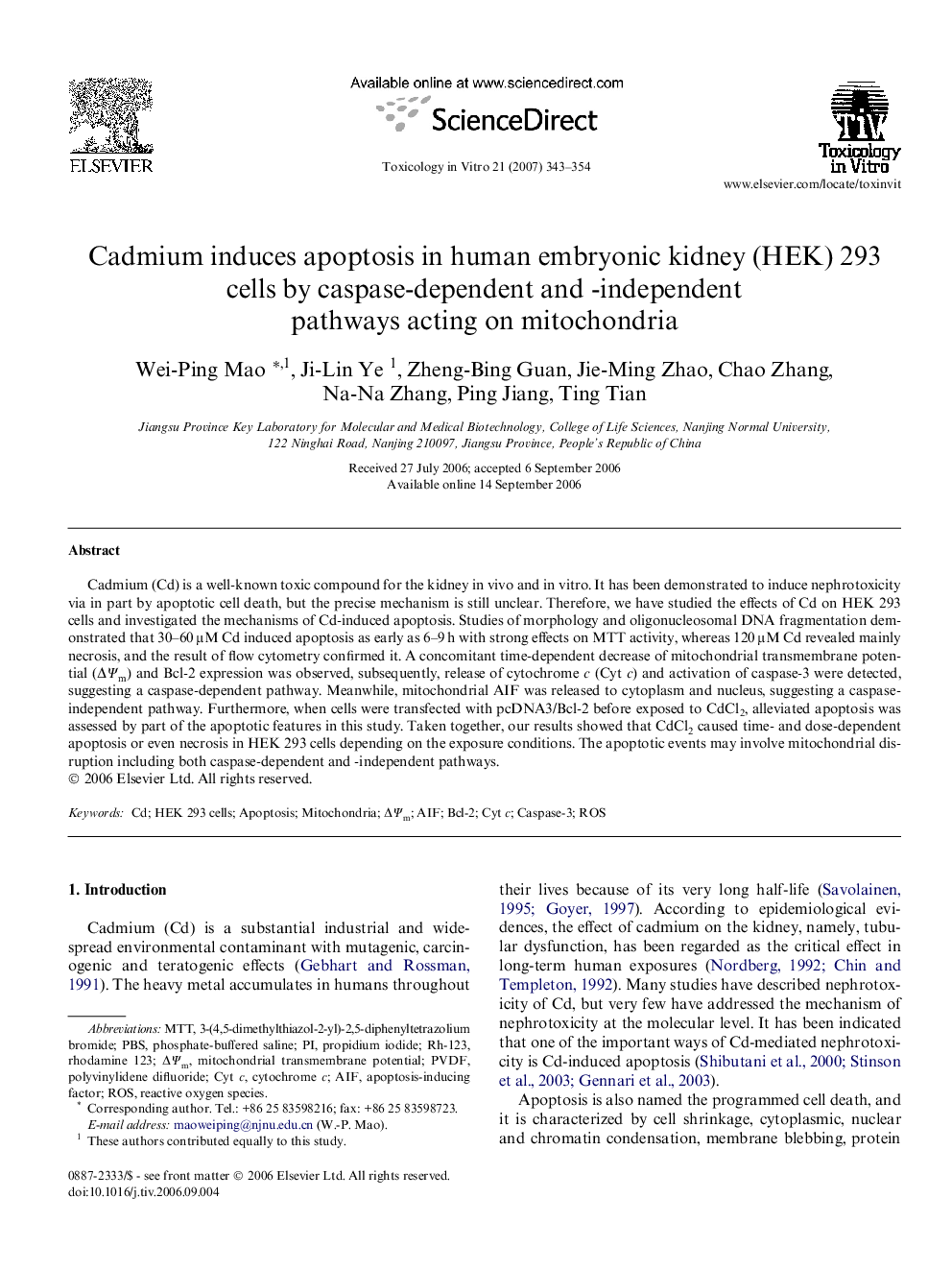| Article ID | Journal | Published Year | Pages | File Type |
|---|---|---|---|---|
| 2603839 | Toxicology in Vitro | 2007 | 12 Pages |
Cadmium (Cd) is a well-known toxic compound for the kidney in vivo and in vitro. It has been demonstrated to induce nephrotoxicity via in part by apoptotic cell death, but the precise mechanism is still unclear. Therefore, we have studied the effects of Cd on HEK 293 cells and investigated the mechanisms of Cd-induced apoptosis. Studies of morphology and oligonucleosomal DNA fragmentation demonstrated that 30–60 μM Cd induced apoptosis as early as 6–9 h with strong effects on MTT activity, whereas 120 μM Cd revealed mainly necrosis, and the result of flow cytometry confirmed it. A concomitant time-dependent decrease of mitochondrial transmembrane potential (ΔΨm) and Bcl-2 expression was observed, subsequently, release of cytochrome c (Cyt c) and activation of caspase-3 were detected, suggesting a caspase-dependent pathway. Meanwhile, mitochondrial AIF was released to cytoplasm and nucleus, suggesting a caspase-independent pathway. Furthermore, when cells were transfected with pcDNA3/Bcl-2 before exposed to CdCl2, alleviated apoptosis was assessed by part of the apoptotic features in this study. Taken together, our results showed that CdCl2 caused time- and dose-dependent apoptosis or even necrosis in HEK 293 cells depending on the exposure conditions. The apoptotic events may involve mitochondrial disruption including both caspase-dependent and -independent pathways.
